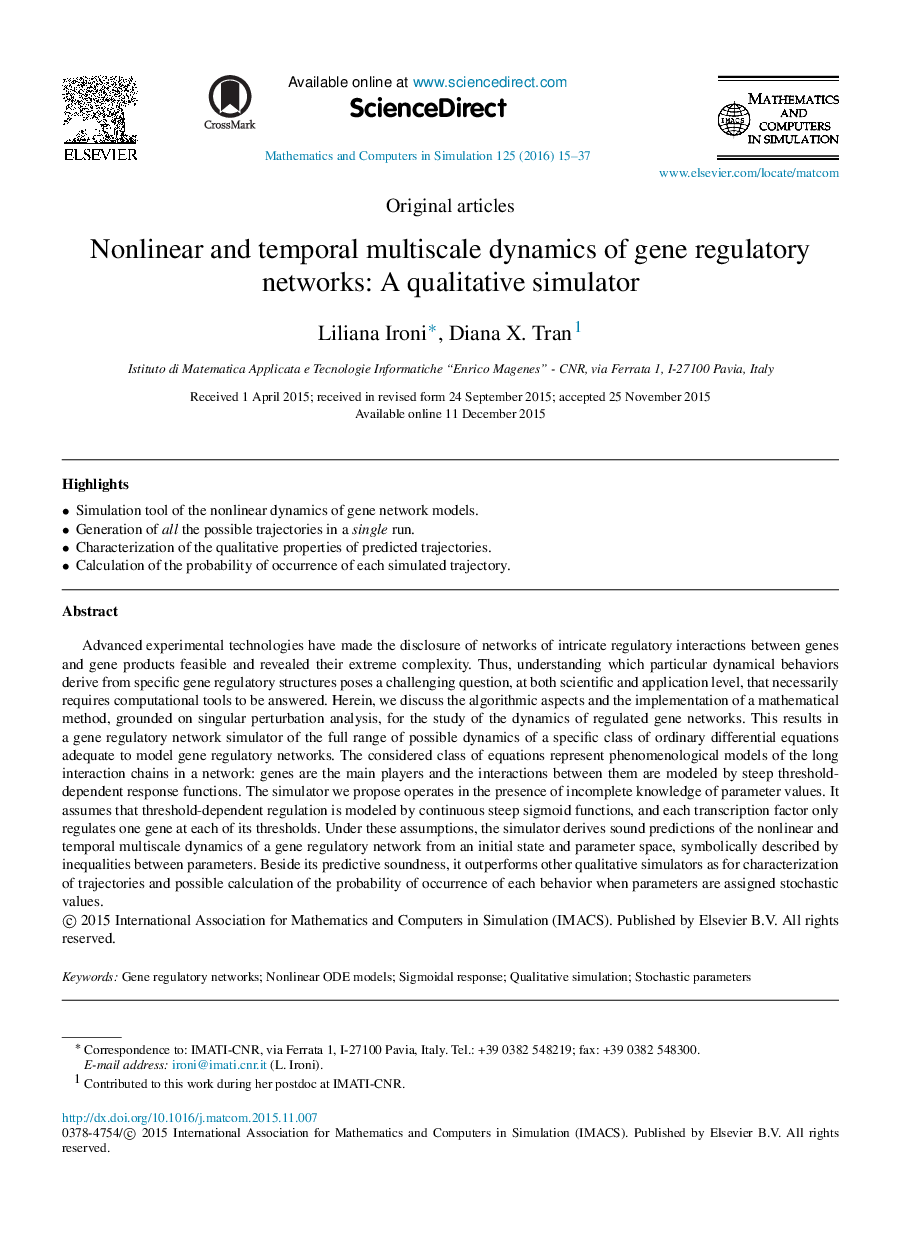| Article ID | Journal | Published Year | Pages | File Type |
|---|---|---|---|---|
| 1139199 | Mathematics and Computers in Simulation | 2016 | 23 Pages |
•Simulation tool of the nonlinear dynamics of gene network models.•Generation of all the possible trajectories in a single run.•Characterization of the qualitative properties of predicted trajectories.•Calculation of the probability of occurrence of each simulated trajectory.
Advanced experimental technologies have made the disclosure of networks of intricate regulatory interactions between genes and gene products feasible and revealed their extreme complexity. Thus, understanding which particular dynamical behaviors derive from specific gene regulatory structures poses a challenging question, at both scientific and application level, that necessarily requires computational tools to be answered. Herein, we discuss the algorithmic aspects and the implementation of a mathematical method, grounded on singular perturbation analysis, for the study of the dynamics of regulated gene networks. This results in a gene regulatory network simulator of the full range of possible dynamics of a specific class of ordinary differential equations adequate to model gene regulatory networks. The considered class of equations represent phenomenological models of the long interaction chains in a network: genes are the main players and the interactions between them are modeled by steep threshold-dependent response functions. The simulator we propose operates in the presence of incomplete knowledge of parameter values. It assumes that threshold-dependent regulation is modeled by continuous steep sigmoid functions, and each transcription factor only regulates one gene at each of its thresholds. Under these assumptions, the simulator derives sound predictions of the nonlinear and temporal multiscale dynamics of a gene regulatory network from an initial state and parameter space, symbolically described by inequalities between parameters. Beside its predictive soundness, it outperforms other qualitative simulators as for characterization of trajectories and possible calculation of the probability of occurrence of each behavior when parameters are assigned stochastic values.
